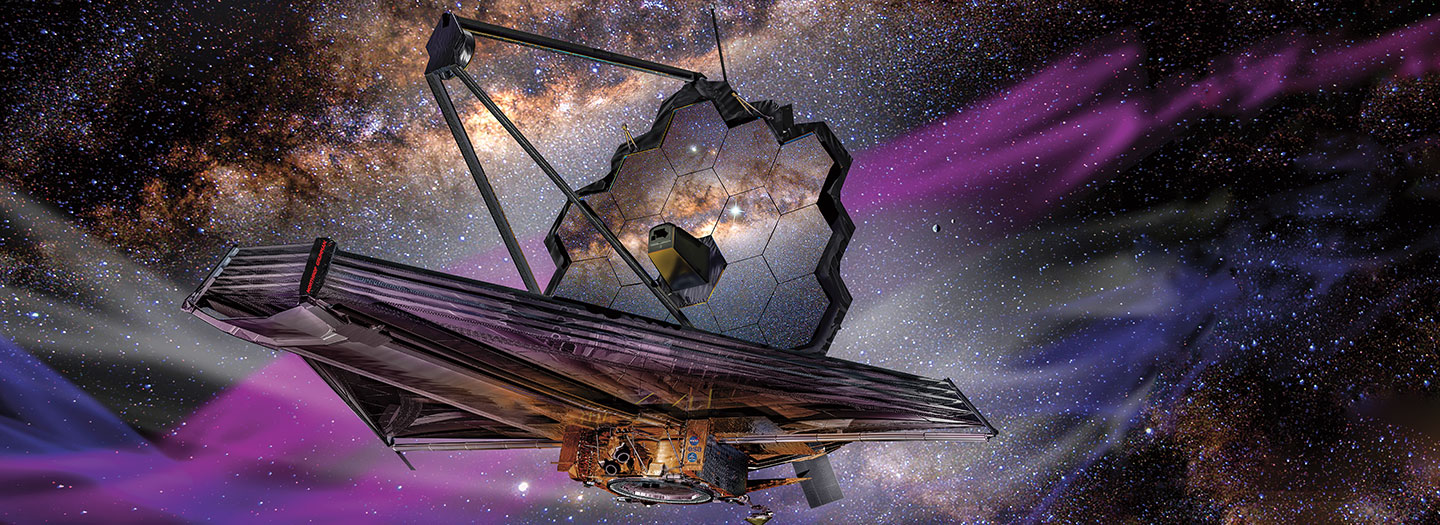Nearly three decades ago, NASA began working on plans for a massive space telescope that would provide views of our universe unlike anything ever seen before. Now, the James Webb Space Telescope’s construction is nearing completion. When launched in 2021, “it will be the largest telescope ever sent into space,” says Matt Mountain, president of the Association of Universities for Research in Astronomy and a scientist working on the telescope.
Webb’s developers have faced many challenges designing and testing the gargantuan telescope—including figuring out how to get it into space. The two-story observatory is too big to fit on any rocket, so it needs to be launched folded up. As it flies toward its destination, about 1.5 million kilometers (1 million miles) away, it will unfold in an intricate series of steps.
Once in position, Webb will orbit, or circle, the sun in lockstep with Earth. If the mission succeeds, scientists will be rewarded with an unprecedented look at galaxies, planets orbiting distant stars, and our own solar system.
NASA started plans for a huge space telescope almost three decades ago. It would provide views of our universe like nothing ever seen before. Now the James Webb Space Telescope is almost finished. It will launch in 2021, and “it will be the largest telescope ever sent into space,” says Matt Mountain. He’s president of the Association of Universities for Research in Astronomy and a scientist working on the telescope.
Webb’s developers have faced many challenges as they’ve designed and tested the giant telescope. One was finding a way to get it into space. The two-story observatory is too big to fit on any rocket, so it must be folded up to launch. It will fly toward its target, about 1.5 million kilometers (1 million miles) away. Along the way, it will unfold in a complex series of steps.
When it’s in place, Webb will orbit, or circle, the sun at the same rate as Earth. If the mission succeeds, scientists will get a brand-new look at galaxies, planets orbiting far-off stars, and our own solar system.

